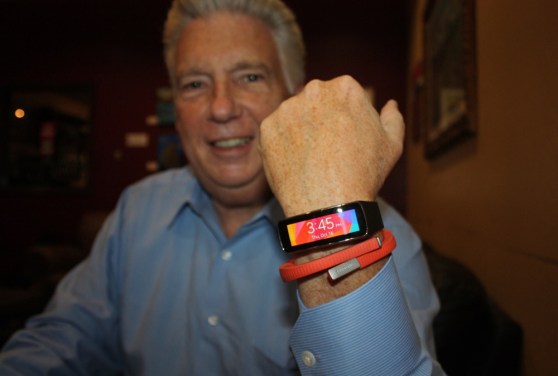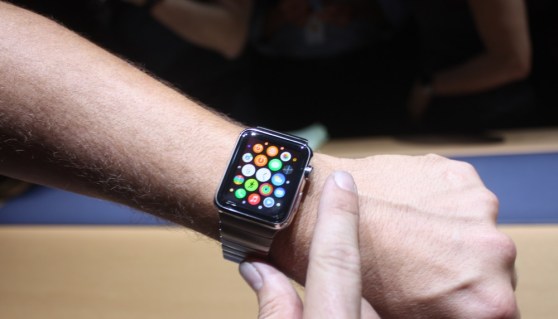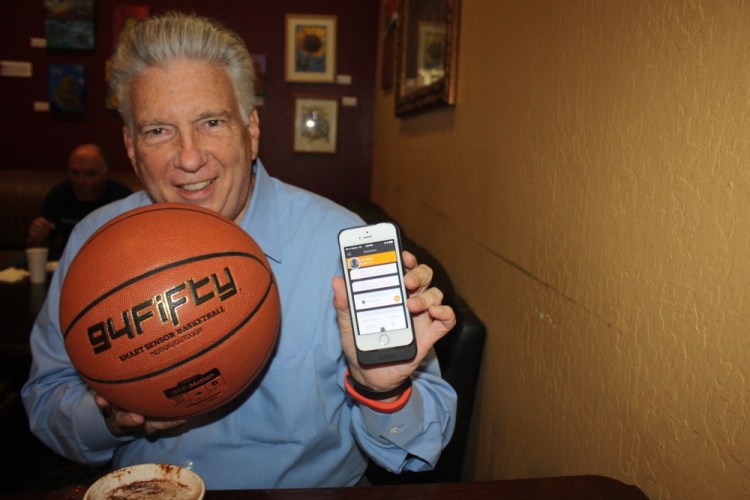I’ve been meeting with Jim Barry for many years, and he doesn’t want me to call him the old man of tech. So I’ll refer to him as the wise man of tech. Every year, he tours the country with his gadgets and encourages people to come to the sprawling tech trade show, International CES, commonly known as the Consumer Electronics Show, every January in Las Vegas.
The Consumer Electronics Association, which puts on CES, calls Barry the Digital Answer Man. He’s a former tech journalist and serves as the face of the CEA. This year, the wise man brought a smart basketball from InfoMotion, a company that got a lot of attention at last year’s show. It’s shipping the basketball, which measures your shot accuracy, and through an app, offers you coaching advice on how to shoot better.
Barry has a good eye for what’s new because he gets to look at a ton of products for a living. We caught up with him in a recent interview in Silicon Valley. Among the interesting topics: The Internet of Things is getting bigger, and CES’s Eureka Park startup zone will have twice as many startups as last year (200 companies).
I enjoyed talking with Barry, particularly when he turned all the heads in the café where we met by blasting Waylon Jennings on a Bluetooth speaker. Here’s an edited transcript of our talk.
VentureBeat: What’s new?
Jim Barry: What I’ve been talking about this year, mostly – and it fits also into our holiday survey, which just came out – is wearable tech and the Internet of Everything. As I said earlier this year, if you want to see somebody with a complete blank “what the heck are you talking about” look on their face, mention the Internet of Things or the Internet of Everything.
This is what I’ve been using as an example: The company is called InfoMotion, from Dublin, Ohio. It’s a smart basketball. At the show, we had everything from basketballs to onesies to crock pots to toothbrushes with sensors in them. Here’s the app. The app gives you all kinds of workouts and stuff, and then the coach will coach you up. It’ll tell you to go faster and all the rest of this stuff.
VB: I saw that demo’d last year at the booth. That got a lot of attention.
Barry: It’s cool. It’s very demonstrable. Under here is the sensor. I use it as an example, because people can relate to it. Everybody’s at least seen basketball played.
Everything will have a sensor in it. Then you figure out what to do with that sensor, whether it’s to count things or coach you or all this other stuff. Have you seen these? This is the Samsung Gear. That’s the Gear, and this is the Up, the Jawbone Up.

Above: Jim Barry of the CEA shows off his fitness bands.
VB: I like this Intel Basis Health Tracker because it has the little laser light thing coming down. It monitors your heartbeat, so it knows when you sleep.
Barry: This will do that too. It has a number of things – heartbeat, steps, all the rest. This doesn’t do heartbeat, but it does sleep. And then this is the Motorola, the Moto360. This does a whole bunch of things too. This one works with any Android, but they recommend the MotoX. This works with Galaxy.
VB: What do you think is going to happen to this category, with the Apple watch?
Barry: I would say the jury is out. The jury will not be in for a good amount of time after Apple gets into the market. That may have an impact on this holiday season.
Slightly tangential, but not completely, this year again, tablets, laptops, TVs, smartphones, and video game consoles are the top five. That’s the same as last year, on the wishlist. That’s what people want to get. On the gift list, it’s a little less — people aren’t necessarily giving all of that. But people are giving a lot of headphones. Wireless Bluetooth speakers will become a big thing. There are millions of those.
For the first time this year, a couple of categories showed up. One is fitness tech, whether it’s FitBit or Jawbone or others. Smart watches showed up for the first time as well. The third thing that showed up, which I find is really interesting if you look at it historically, are action camcorders – GoPro and all of those. That’s another thing we’re going to see a lot of at the show.

Above: Apple Watch
VB: That one hasn’t been dominated by GoPro yet?
Barry: I think it is. But there are others, and there are going to be lots more. I’ve heard several people mention it. GoPro is the big player – not only in what they’ve been doing, but also in the general media. One of the interesting things is, I saw a graph of digital cameras. They were at or near the top of the list 10 years ago, what people wanted for the holidays. Digital cameras, obviously, have now been taken over – certainly for snapshots – by smartphones. For special events, weddings and that kind of stuff, you still have a lot of people who like to get a digital camera.
This case works with an app called FLIR, which is Forward-Looking Infra Red. This turns your camera, on an iPhone, into —
VB: Radar?
Barry: No, into an infrared camera. This is good at night, if you’re outside and want to see what’s hot. It’s also good this time of the year if you’re tightening up your house for the winter. You can see where the heat’s escaping. They introduced this at the CES as well.
VB: Somebody was saying that’s a good way to see if someone’s spying on you. You can see the IR signatures of cameras.

